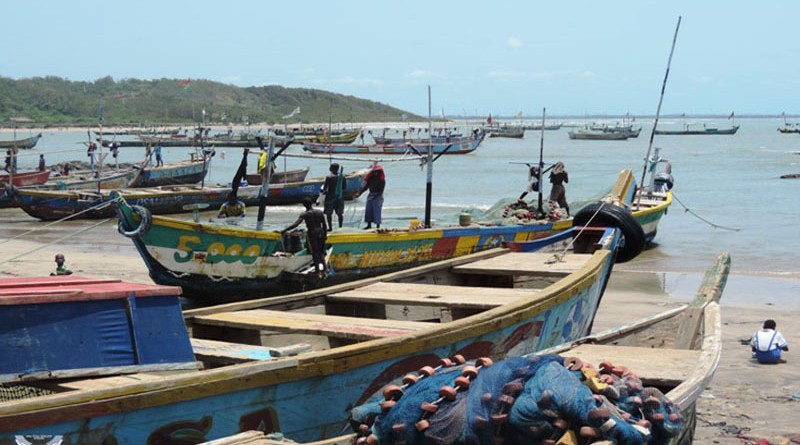Child labour is defined by the International Labour Organization (ILO) as “work that deprives children of their childhood, their potential and their dignity”. It refers to work that is mentally, physically, socially or morally dangerous and harmful to children; and interferes with their schooling/training; whilst human trafficking is the illegal trade in human beings for the purposes of commercial sexual exploitation, or forced labor, a modern-day form of slavery.
There is no universally accepted definition of child labour. Varying definitions of the term are used by international organizations, non-governmental organizations, trade unions and other interest groups. Writers and speakers don’t always specify what definition they are using, and that often leads to confusion.
According to the United States Department of Labor (USDL) in 2010, it is estimated that there are over 2.7 million child labourers in Ghana, or about 43% of all children aged 5-14. Agriculture, fisheries and small-scale mining are major employers of child labour in Ghana.
Child Labour and Trafficking (CLaT) is therefore an international problem affecting millions of people and many countries around the world. In Ghana, the internal trafficking of children is one of the biggest developmental challenges. Thus, in the run up to the design of the Sustainable Fisheries Management Project (SFMP), stakeholder engagements, and visits to various fishing related agencies, personalities and informal conversations with community folks revealed that the coastal fishing communities in the Central Region such as Senya-Beraku, Winneba, Apam, Moree and Elmina are epicenters of CLaT. This subsequently influenced the inclusion of CLaT as a critical issue in the fisheries sector to be addressed under the project.
CLaT in the Central Region
The Central Region is regarded as the fourth poorest in Ghana. The region has been identified as the main source of CLaT in fisheries on the Volta Lake where children are sent to engage in dangerous fishing practices. Both the Fisheries Commission and the Department of Social Welfare have highlighted the problem of illegal child labour in fishing as a rather precarious one. It needs to be addressed to safeguard the development potentials of children, Ghana’s fisheries, promote good governance and socio-economic advancement of inhabitants within the coastal belt and fishing communities.
As an identified challenge within Ghana’s fisheries sector, CLaT is linked to cultural beliefs and practices as well as hardcore poverty. Parents give away their kids for ridiculously low amounts such as 50 US-Dollars with a great risk of never seeing them alive again – death amongst child laborers in fisheries is high. Initial engagement with stakeholders revealed that CLaT activities in coastal fishing communities are prevalent amongst vulnerable single female-headed households with many children. The cause of this: migrant male fishers often leave the womenfolk to fend for themselves and their children, without provision of money for school fees or food.
On the other-hand, Trafficking is mostly expressed in the form of agents who approach parents offering relief in the form of payments and promises to care for the children, but then force them into strenuous physical activities in lake fisheries. These children are generally not enrolled in school. The children spend their days jumping into frigid, parasite-infested waters at dawn seven days a week to catch fish and untangle nets for ten to twelve-hour stretches. Young girls are tasked with cleaning, smoking and selling the fish and are also employed as domestic servants.
CLaT interventions under SFMP
The CLaT component under SFMP in the Central Region is led by Friends of the Nation (FoN). The proposed interventions target a behavior change communications initiative that will be developed and implemented in an effort to make such practices socially unacceptable. It will also coordinate with livelihoods activities conducted by Central and Western Fishmongers Improvement Association (CEWEFIA) and Development Action Association (DAA) – two women-focused organizations that have mandates related to fishing communities and social welfare; and with the Netherlands Development Organization (SNV) providing technical support, and other critical services within the initiative.
Coordinating closely with the CLaT focal person at the Fisheries Commission in Accra, a comprehensive assessment of the problem in the Central Region will be conducted to identify communities and households most susceptible to such practices and root drivers of the problem. This work will include a comprehensive literature review on the problem, identifying current actors involved in addressing this issue, and conducting a number of community meetings, as well as a household survey which targets at-risk families with a strong communications initiative. The University of Cape Coast Center for Coastal Management (UCC-CCM) and Coastal Resources Centre of the University of Rhode Island (CRC-URI) will be rope-in to provide technical support. The intended outcome of this assessment is to make these communities the priority beneficiaries of any livelihood interventions.
While these activities do not directly contribute to the overall project purpose to revitalize fisheries resources, they help build community social resilience and capacity – and they are the right thing to do.
April 23, 2015
Caption: Beach scene in Western Region. The picture does not in any way describe any child labour activity in fisheries, but only a beach scene involving children.

